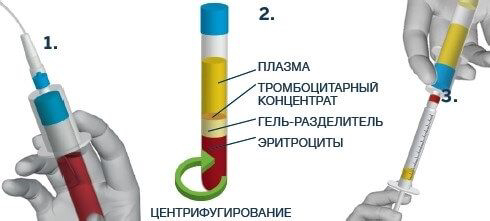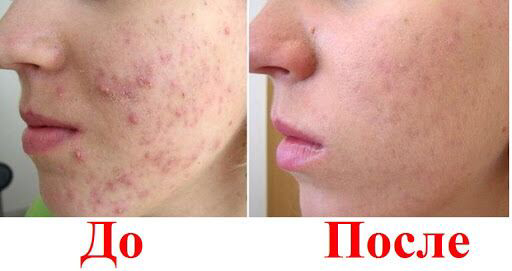Acne is one of the most common dermal pathologies among the world's population. In severe forms, acne treatment involves the administration of systemic drugs, which undeniably gives a result when all instructions are followed by the patient. All kinds of cosmetic procedures can also have a lasting therapeutic effect in patients, increasing the remission time, preventing relapses and possible complications, one of these procedures is plasma therapy or PRP therapy. Plasma therapy has proven itself as an injection method for acne treatment. For more information about the mechanism of action and the results of PRP therapy, read on estet-portal.com
- Aims pursued when using plasma therapy, their mechanism of action
- Clinical effect of plasma therapy in acne treatment
Aims pursued when using plasma therapy, their mechanism of action
The goal of a cosmetologist in the treatment of acne is to support the antibacterial systems of the dermis, barrier properties, normalize the process of exfoliation of the stratum corneum and seboregulation. Do not forget that it is also very important to prevent the formation of scars and age spots in the treatment of such patients.Plasma therapy-a method of using platelet-rich plasma, has an effect both on the dermal pathology itself and on complications in the form of scars and age spots.
Read also: Acne treatment: modern therapeutic approaches
Antimicrobial peptides contained in blood plasma have a bacteriostatic effect on resistant strains of S.Aures and S.Epidermis, which in turn reduces the microbial load and optimizes the immune response.
Antimicrobial peptides found in plasma:
- Fibrinopeptide A
- Fibrinopeptide B
- Platelet factor 4
- Thymosin B-4
- Connective tissue activating peptide 3
Follow us on Facebook!

The effect of PRP therapy is due to cytokines secreted from platelets, which promote tissue regeneration and healing. So, the composition of autologous plasma includes:
- epidermal platelet growth factor (PD-EGF);
- platelet growth factor (PDGF) - stimulation of cell proliferation
- bone morphogenetic protein (BMP);
- transforming growth factor (TGF) - stimulation of tissue repair
- endothelial cell growth factor (ECGF) - stimulation of angiogenesis
- Basic Fibroblast Growth Factor (bFGF).
In the context of the immune response, when conducting plasma therapy, we are interested in such cytokines and chemokines as:
- RANTES-activation of natural killers, eosinophils and basophils,
- CXCL7-neutrophil activation and migration,
- PF4-induces the phenotype of mononuclear phagocytes and attracts monocytes
The expression of genes involved in inflammatory reactions has acquired a tendency to decrease when plasma therapy is used for patients.
Read also: Plasma therapy: current trends in the direction
Phagocytic cells are universal effectors of homeostasis. Phagocytes – "Mirror of homeostasis", they instantly fix any change inside the body. The most numerous group of leukocytes are neutrophils. They are initiating factors in the development of inflammation.
The effectiveness of plasma therapy for the treatment of acne in conditions of reduced local immunity is also due to the characteristics of neutrophils.
In addition, the regeneration of the skin surface and the regulation of inflammation contribute to:
- serotonin;
- dopamine;
- histamine;
- adenosine.

Used classes PRP according to the PAW classification, depending on the presence of fibrin and leukocytes in the blood plasma:
- P-PRP (Pure Platelet Rich Plasma) – pure, without leukocytes, enriched with platelets ;
- L-PRP (Leucocyte and Platelet Rich Plasma) – enriched with both leukocytes and platelets;
- P-PRF (Pure Platelet Rich Fibrin) – platelet-rich fibrin;
- L-PRF (Leucocyte and Platelet Rich Fibrin) – fibrin enriched in platelets and leukocytes
Clinical effect of plasma therapy in the treatment of acne
Plasma Therapy is without a doubt unique injection method. In the case of acne and other infections, a decrease in the adhesiveness of phagocytes is observed, which is the reason for the weakening of the immune response and the transition of the disease to a chronic form. There is a stable clinical effect of plasmotherapy (platelet-leukocyte autoplasma) as part of the complex therapy for people with acne. Clinical Effect of PRP Therapy as part of complex therapy resistant.
This is due to:
- the action of cytokines on transmembrane receptors of local and circulating cells;
- initiation of the appearance of proteins regulating cell proliferation;
- initiation of cell differentiation, angiogenesis, chemotaxis;
- stimulation of extracellular matrix formation.
Thanks to the above processes, the inflammatory response is reduced, and an increase in local and general immunity is also stimulated.
Course acne treatment in the acute stage: 3–4 procedures every 2 weeks, in chronic course: 4–6 procedures once a month.
More interesting videos on our YouTube-channel!







Add a comment